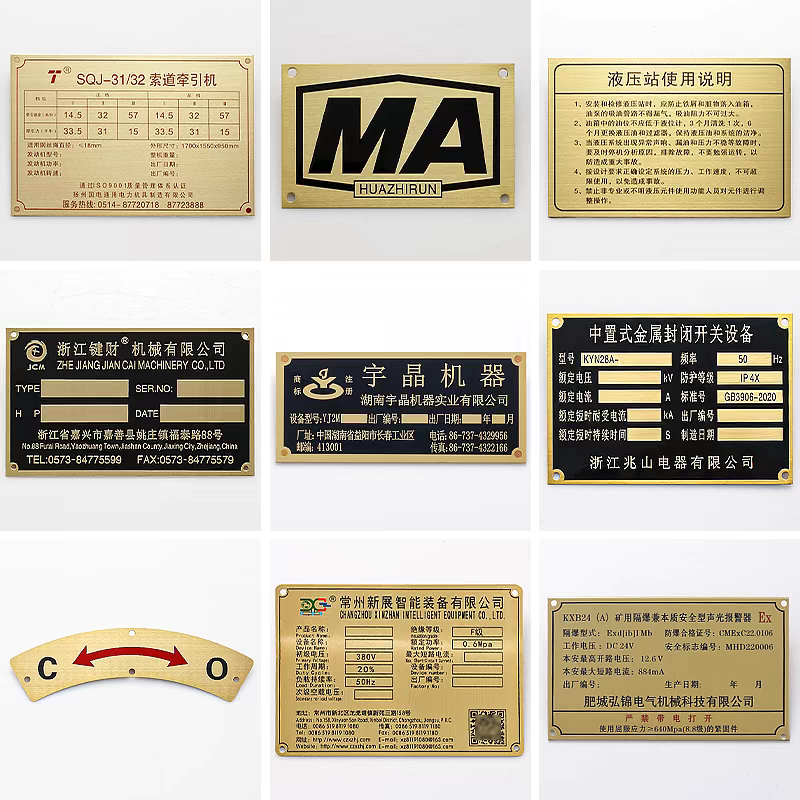Fire extinguishers are critical first-response tools during emergencies. But what guarantees they will work when needed? The answer often lies in a small, seemingly simple component: the extinguisher inspection tag. This tag is the legal and practical record of an extinguisher's maintenance history and current state of readiness. Understanding these tags is not just a matter of compliance; it's a crucial aspect of fire safety for any business, landlord, or facility manager.
This comprehensive guide will delve into the world of extinguisher inspection tags, exploring their importance, the different types, what information they contain, common problems to avoid, and the legal requirements surrounding them. By the end, you will be equipped with the knowledge to ensure your fire safety equipment is always inspection-ready and, more importantly, operational in a crisis.

What Are Extinguisher Inspection Tags and Why Are They So Important?
An extinguisher inspection tag is a durable paper or plastic card attached to the fire extinguisher via a metal or plastic ring. It serves as a permanent logbook for that specific unit. Its primary purpose is to provide a quick, visual verification that the extinguisher has been professionally inspected, tested, and maintained according to the strict standards set by organizations like the National Fire Protection Association (NFPA), specifically under NFPA 10.
The importance of these tags cannot be overstated:
Proof of Compliance: During a fire marshal inspection or an insurance audit, the extinguisher inspection tag is the first thing officials check. Missing or incomplete tags can result in hefty fines, violations, and even forced business closure until the issue is rectified.
Maintenance History: The tag provides a chronological history of all service performed on the unit. This allows any technician to understand the extinguisher's service life and identify any recurring issues.
Accountability: Each entry on the tag is typically signed or initialed by the qualified personnel who performed the service. This creates a clear chain of accountability.
Peace of Mind: For property owners and safety managers, a properly filled-out extinguisher inspection tag offers assurance that the device is functional and ready to use, potentially saving lives and property.
Without this documented history, an extinguisher is essentially an unknown quantity. It could be fully charged and operational, or it could be empty and defective. The tag removes this uncertainty.
The Different Types of Inspections and Their Corresponding Tags
Not all fire extinguisher inspections are the same. The frequency and depth of inspection are mandated by NFPA 10, and the extinguisher inspection tag must reflect these different levels of service.
1. Monthly Visual Inspections (Often performed in-house)
These are quick, visual checks typically conducted by facility staff or a designated employee. They are not recorded on the main service tag but are often tracked separately with a clip-on monthly inspection tag or a initial-and-date checkmark on the back of the main tag. These inspections verify:
The extinguisher is in its designated place.
The pin and seal are intact.
The nozzle is not obstructed.
There is no obvious physical damage, corrosion, or leakage.
The pressure gauge needle is in the green "full" zone.
2. Annual Maintenance Inspection (Performed by a Certified Professional)
This is a thorough inspection conducted by a certified fire protection technician. It includes the visual inspection but goes much further, often involving:
Weighing the extinguisher to ensure it still holds its full charge.
Checking mechanical parts.
Examining the expiration date of the agent (for dry chemical models).
This service is meticulously documented on the main extinguisher inspection tag with the date, type of service, and the technician's signature or identification number.
3. Internal Maintenance (6-Year Requirement)
Every six years, stored-pressure dry chemical extinguishers must undergo an internal examination. The extinguisher is emptied, its internal parts are inspected for corrosion, and it is recharged with new agent. This is a major service event and is always recorded on the tag.
4. Hydrostatic Testing (12-Year Requirement)
This is a pressure test conducted to ensure the integrity of the extinguisher's cylinder. It is required every 12 years for most common types of extinguishers. After passing the test, the date is stamped directly onto the cylinder's metal neck and recorded on the extinguisher inspection tag. A cylinder that fails hydrostatic testing must be taken out of service immediately.

How to Read and Understand the Information on an Extinguisher Tag
A properly filled-out extinguisher inspection tag will contain a wealth of information. Here’s a breakdown of the key fields you will commonly find:
Extinguisher ID: A number or code that links the tag to a specific extinguisher and its location in your facility.
Date of Last Service: The most recent date on which professional service was performed.
Type of Last Service: This will indicate whether the service was an "Annual Inspection," "6-Year Maintenance," or "Hydrostatic Test."
Service Technician Information: The name, signature, or ID number of the certified technician who performed the work.
Company Information: The name and contact information of the fire protection company that employed the technician.
Recharge/Service History: A multi-row table with columns for date, type of service, and technician initials, providing the full lifecycle history.
Hydrostatic Test Date: The most recent date the cylinder passed its pressure test.
Next Service Due Date: A clearly marked field indicating when the next annual, 6-year, or 12-year service is required.
Understanding this information allows you to track the status of your equipment at a glance and plan for upcoming maintenance.
7 Common Problems and Violations with Inspection Tags
Even with the best intentions, issues with extinguisher inspection tags are a frequent source of compliance failures. Here are the most common problems to watch out for:
Missing Tags: This is the most critical violation. An extinguisher without a tag is considered not serviced and therefore not compliant. Tags can be ripped off accidentally or fade over time, so regular checks are essential.
Illegible or Faded Writing: Tags are exposed to sunlight, cleaning chemicals, and general wear-and-tear. Over time, the writing can fade, making the maintenance history unreadable. If the information cannot be read, the tag might as well be missing.
Out-of-Date Service: The tag must show that the extinguisher has been serviced within the last 12 months. An annual inspection that is even one day overdue is a violation. It's crucial to track due dates proactively.
Missing Hydrostatic Test Date: If the extinguisher is over 12 years old and there is no hydrostatic test date stamped on the cylinder and recorded on the tag, it is a major violation. The extinguisher must be removed from service immediately until the test is performed.
Improper or Missing Technician Identification: Service entries must be signed or initialed by the technician. An anonymous entry is not valid and will not satisfy an inspector.
DIY Service Documentation: Only certified professionals can perform and document annual, 6-year, and 12-year services. A tag filled out by uncertified building staff for these major services is invalid.
Physical Damage to the Tag: A tag that is torn, oil-stained, or otherwise damaged can raise red flags for an inspector, as it may indicate underlying issues with the extinguisher's maintenance or environment.
The Legal and Insurance Implications of Non-Compliance
Ignoring extinguisher inspection tags is a risk with significant consequences.
OSHA and NFPA Compliance: The Occupational Safety and Health Administration (OSHA) mandates that employers provide a safe workplace, which includes maintained fire equipment. They adopt NFPA standards, making compliance with NFPA 10 a legal requirement.
Fire Marshal Inspections: Fire marshals have the authority to conduct unannounced inspections. Finding violations related to fire extinguisher tags can lead to fines and mandatory corrective action.
Insurance Policy Voidance: Most commercial property insurance policies require the policyholder to maintain fire safety equipment. In the event of a fire, if an investigation reveals that extinguishers were not properly maintained and tagged, the insurance company may deny the claim, leaving you with devastating financial losses.
Liability in Case of Injury: If a poorly maintained extinguisher fails during an emergency and results in injury or greater property damage, the property owner could be held liable for negligence. The missing or incomplete extinguisher inspection tag would be the primary evidence of that negligence.
Digital Solutions: The Future of Extinguisher Inspection Tracking
While physical paper tags are the traditional standard, digital solutions are emerging. These systems use QR codes or NFC tags attached to the extinguisher. Service technicians and facility staff can scan the code with a smartphone or tablet to access and update a digital service log.
Benefits include:
Permanent Records: Digital logs cannot be lost, faded, or damaged.
Automated Reminders: The system can automatically generate alerts for upcoming monthly, annual, or 6-year services.
Centralized Management: Facility managers can view the status of every extinguisher across multiple locations from a single dashboard.
Rich Data: Digital logs can include photos of the extinguisher, detailed notes from the technician, and downloadable compliance reports for inspectors.
Even with digital systems, a physical extinguisher inspection tag with a QR code is often still placed on the unit for quick visual verification and to provide access to the digital record.
The humble extinguisher inspection tag is far more than a piece of paper. It is the heartbeat of your fire extinguisher maintenance program and a non-negotiable component of life safety compliance. By understanding its purpose, knowing how to read it, and vigilantly avoiding common problems, you protect not just your property and assets, but more importantly, the lives of everyone inside it. Make a monthly check of your extinguisher inspection tags a standard part of your safety routine. When you see that tag, filled out correctly and up-to-date, you can be confident that your first line of defense against fire is ready for duty.






